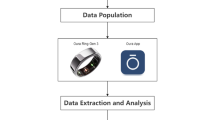Abstract
Wearable devices have become the face of neoteric technology. What started off as a fashionable trend is gradually becoming an integral part of the user. Devices such as Google Glasses, FitBit, iWatch and other smart watches have been dominating the tech-savvy niche for a while now. The continual real time data collected by wearable devices could be used as forensic evidence to get to an accurate conclusion. Due to the heterogeneous nature of data collected by wearable devices, evidence acquired categorizes into different fields. Data collected by wearable tech of great use in the cracking of cases since it is the closet to the user on a personal level. In certain cases, it has also reduced the time taken to get to the inference. Data collected by these devices that can be utilized for forensics are Geo-location information, Physical and health information of the user, Logs of activities, Account details of Social Media Interaction, Calendar details, Media files, Key Generation Mechanism and Key-Gen logs, etc. This paper details about the practicality of the Digital Forensics of Wearable Devices. A methodology that can be used for the Forensic Analysis has been proposed. The Similarities and the Differences between the Mobile Forensics and Wearable Devices. The Challenges faced during Forensics of Wearable Devices due to ambiguities in present forensic technologies.
Access this chapter
Tax calculation will be finalised at checkout
Purchases are for personal use only
Similar content being viewed by others
References
Vidas, T., Zhang, C., Christin, N.: Toward a general collection methodology for Android devices. Digit. Invest. 8, S14–S24 (2011)
Chan, M., Estève, D., Fourniols, J.-Y., Escriba, C., Campo, E.: Smart wearable systems: current status and future challenges. Artif. Intell. Med. 56(3), 137–156 (2012)
Baggili, I., Oduro, J., Anthony, K., Breitinger, F., McGee, G.: Watch what you wear: preliminary forensic analysis of smart watches. In: 2015 10th International Conference on Availability, Reliability and Security (ARES), pp. 303–311. IEEE (2015)
Dykstra, J.: Digital forensics for IaaS cloud computing. Accessed 12 Nov 2012. 2015
Lillis, D., Becker, B., O’Sullivan, T., Scanlon, M.: Current challenges and future research areas for digital forensic investigation. arXiv preprint arXiv:1604.03850 (2016)
Scanlon, M.: Battling the digital forensic backlog through data deduplication. In: 2016 Sixth International Conference on Innovative Computing Technology (INTECH), pp. 10–14. IEEE (2016)
Wearable Tech Forensics - LCDI Team: The Leahy Center for Digital Investigation, 10 February 2016. lcdiblog.champlain.edu/2016/02/10/wearable-technology-forensics/
Zhou, J.: Wearable devices could keep innocent people out of jail—If the court allows it (2015). Www.Theepochtimes.Com. https://www.theepochtimes.com/wearable-devices-could-keep-innocent-people-out-of-jail-if-the-court-allows-it_1414386.html
Author information
Authors and Affiliations
Corresponding author
Editor information
Editors and Affiliations
Rights and permissions
Copyright information
© 2019 Springer Nature Singapore Pte Ltd.
About this paper
Cite this paper
Kasukurti, D.H., Patil, S. (2019). Wearable Device Forensic: Probable Case Studies and Proposed Methodology. In: Thampi, S., Madria, S., Wang, G., Rawat, D., Alcaraz Calero, J. (eds) Security in Computing and Communications. SSCC 2018. Communications in Computer and Information Science, vol 969. Springer, Singapore. https://doi.org/10.1007/978-981-13-5826-5_22
Download citation
DOI: https://doi.org/10.1007/978-981-13-5826-5_22
Published:
Publisher Name: Springer, Singapore
Print ISBN: 978-981-13-5825-8
Online ISBN: 978-981-13-5826-5
eBook Packages: Computer ScienceComputer Science (R0)




